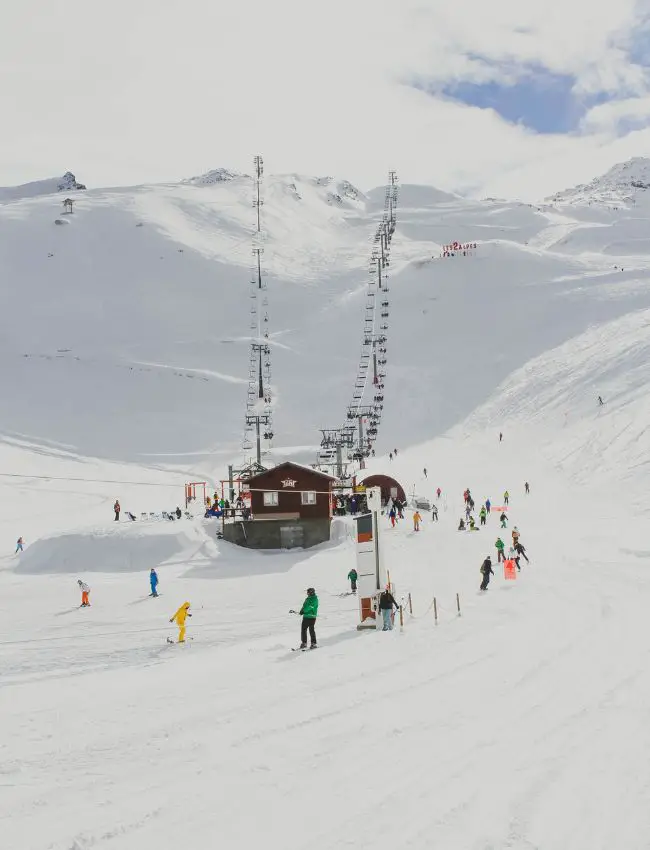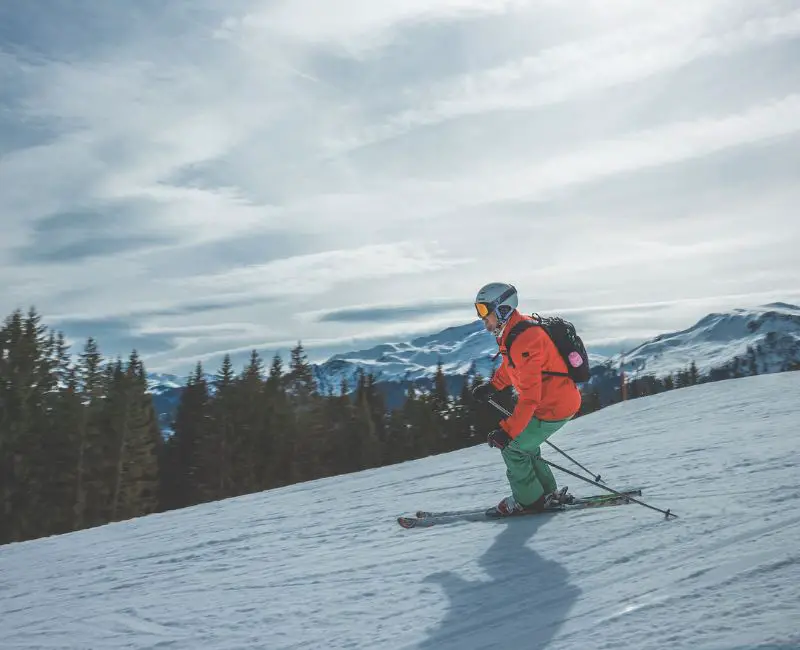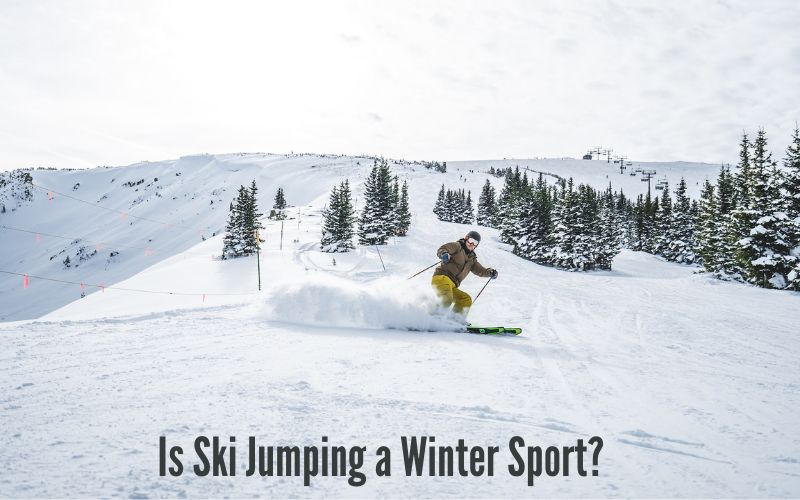Yes, ski jumping is a winter sport that involves skiing down a ramp and jumping. It is a thrilling and popular winter sport that requires athletes to showcase their skills in both skiing and aerial acrobatics.
Ski jumping is a major event in the Winter Olympics and is enjoyed by both participants and spectators around the world. The sport requires immense strength, technique, and courage as athletes soar through the air with grace and precision.
Ski jumping has a rich history and is deeply embedded in the winter sports culture, attracting avid fans and athletes who are always eager to witness and participate in this exhilarating sport.
Unveiling Ski Jumping: A Winter Sport Phenomenon
Ski jumping, an awe-inspiring winter sport phenomenon, has captured the hearts of spectators globally with its combination of skill, courage, and agility.
These gravity-defying athletes soar through the air, showcasing unparalleled athleticism against a backdrop of snow-capped mountains and an adrenaline-fueled atmosphere.
Let’s delve into the origins and evolution of ski jumping as a revered winter sport.
Understanding The Origin Of Ski Jumping

The roots of ski jumping can be traced back to the Nordic countries, where it was primarily used as a mode of transportation in snowy terrains.
Over time, it evolved into a competitive sport, gaining popularity across Europe and eventually spreading to other continents.
This daring discipline swiftly captivated the attention of winter sports enthusiasts, paving the way for the evolution of ski jumping into a globally celebrated winter sport.
Evolution Of Ski Jumping As A Winter Sport
The evolution of ski jumping saw the development of specialized jumping skis, improved jumping techniques, and the establishment of official competitions, including the iconic Olympic Games.
As the sport progressed, ski jumpers began achieving remarkable distances, reaching staggering heights, and executing complex aerial maneuvers with precision.
These advancements contributed to ski jumping’s status as a revered and adrenaline-pumping winter sport, attracting a growing audience and inspiring generations of aspiring jumpers worldwide.
Technological Advancements In Ski Jumping Equipment
Technological advancements in ski jumping equipment have played a pivotal role in the evolution of this exhilarating winter sport.
As one of the most visually captivating and adrenaline-fueled events in the Winter Olympics, ski jumping has witnessed a remarkable transformation in equipment design and functionality over the years.
From the historical progression of ski jumping gear to the modern-day evolution, let’s delve into the fascinating world of ski jumping equipment advancements.
Historical Progression Of Ski Jumping Gear
The historical development of ski jumping gear showcases the ingenuity and dedication of athletes and equipment designers over time.
During the early years of ski jumping, equipment was relatively basic, consisting of wooden skis and minimal safety features.
- Wooden skis were the primary choice for ski jumping before the development of more advanced materials.
- Bindings were simple and often posed significant risks to the athletes.
- Safety helmets and ski suits lacked the sophisticated features seen in modern-day equipment.
Modern-day Ski Jumping Gear Evolution
The modern era has ushered in significant advancements in ski jumping gear, enhancing safety, performance, and aerodynamics.
Athletes now benefit from state-of-the-art materials and design innovations that optimize their ability to achieve remarkable distances and heights.
- Ski technology has evolved to incorporate lightweight yet durable materials such as carbon fiber and advanced composite plastics.
- Bindings have been redesigned to enhance stability and minimize the risk of injury during take-off and landing.
- Sophisticated aerodynamic suits and helmets have been developed to reduce wind resistance and enhance overall performance.
Mastering Ski Jumping Techniques And Training

Ski jumping is an exhilarating winter sport that requires a combination of skill, technique, and fearless determination. Mastering the techniques and training required for ski jumping is essential for aspiring athletes to excel in this sport.
Whether it’s perfecting the takeoff, maintaining body control mid-air, or executing a smooth landing, ski jumpers need to hone their skills and undergo tactical training methods to reach the pinnacle of success.
Essential Skills For Successful Ski Jumping
When it comes to mastering ski jumping, several essential skills are crucial for achieving success in this challenging sport.
- Takeoff Technique: Perfecting the takeoff is fundamental in ski jumping. Athletes must learn to balance speed, control, and aerodynamics to achieve maximum distance and style.
- Mid-Air Control: Maintaining stability and control while airborne is pivotal. Mastering body positioning and maintaining equilibrium is essential for a successful jump.
- Landing Precision: Landing smoothly and effectively is critical to a successful jump. Athletes must be adept at adjusting their posture and absorbing impact to ensure a safe and precise landing.
Tactical Training Methods For Aspiring Ski Jumpers
Training methods for ski jumping extend beyond the physical technique and encompass strategic and tactical approaches.
- Strength and Conditioning: Building lower body strength and overall fitness is crucial for explosive takeoffs and maintaining stability in the air.
- Technical Analysis: Utilizing video analysis and feedback from coaches to fine-tune techniques and identify areas for improvement can be invaluable.
- Mental Preparation: Developing mental focus, visualization techniques, and fear management are essential aspects of ski jumping training.
The Thrill Of Ski Jumping Competitions

Witnessing ski jumping competitions is an exhilarating experience that captivates both athletes and spectators alike. The velocity at which the skiers launch themselves into the air, coupled with the spectacular precision of their landings, leaves an indelible impression.
This high-flying winter sport has spawned a global stage for competitions that showcase the skill, technique, and bravery of the participants.
Global Ski Jumping Events And Competitions
Ski jumping competitions attract a global audience and provide a platform for elite athletes to showcase their talents. Prominent events like the Four Hills Tournament in Europe, the FIS Ski Jumping World Cup, and the prestigious Winter Olympic Games offer a stage for athletes to compete at the highest level.
Talented individuals from various countries converge to test their prowess and vie for the top honors in these renowned competitions.
Influence Of Ski Jumping Competitions On The Sport’s Popularity
The popularity of ski jumping has been significantly bolstered by the excitement and fervor surrounding its competitions. These events not only attract fans to the sport but also inspire aspiring athletes to take up ski jumping.
This surge in interest has led to the continued expansion and development of ski jumping facilities and training programs around the world, further propelling the sport’s growth and accessibility.
Overcoming Challenges In Ski Jumping
Challenges are an integral part of any sports discipline, and ski jumping is no exception.
Athletes participating in ski jumping encounter a myriad of challenges that test their physical and mental resilience. Overcoming these hurdles not only elevates their performance but also underscores the true spirit of the sport.
Let’s delve into the various challenges that competitive ski jumpers face and the strategies implemented to mitigate them.
Risk Factors In Ski Jumping And Safety Measures
Ski jumping is a high-risk sport that demands precision and skill. Athletes hurtle down steep ramps at staggering speeds before launching themselves into the air, exposing themselves to various potential hazards. Some of the prevalent risk factors in ski jumping include:
- Extreme heights and speeds
- Unpredictable weather conditions
- Difficulties in landing
To mitigate these risks, stringent safety measures are enforced, encompassing:
- Regular equipment inspections and maintenance
- Adherence to strict jump rules and regulations
- Constant monitoring of weather conditions for safe jumps
Mental And Physical Resilience In Ski Jumping
Succeeding in ski jumping necessitates unwavering mental and physical resilience. Athletes must exhibit exceptional levels of concentration, focus, and endurance to excel in this sport. The challenges they face include:
- Overcoming fear of heights and speed
- Coping with the pressure of high-stakes competitions
- Enduring physically demanding training regimes
Training programs are designed not only to enhance technical skills but also to bolster athletes’ mental fortitude. Mental training, visualization techniques, and sports psychology play pivotal roles in preparing ski jumpers to conquer these challenges.
Conclusion
Ski jumping is undoubtedly a thrilling and competitive winter sport that requires immense skill and determination. As spectators and athletes, we can appreciate the incredible athleticism and precision involved in this high-flying discipline. With its rich history and continuing global appeal, ski jumping truly embodies the spirit of winter sports.






